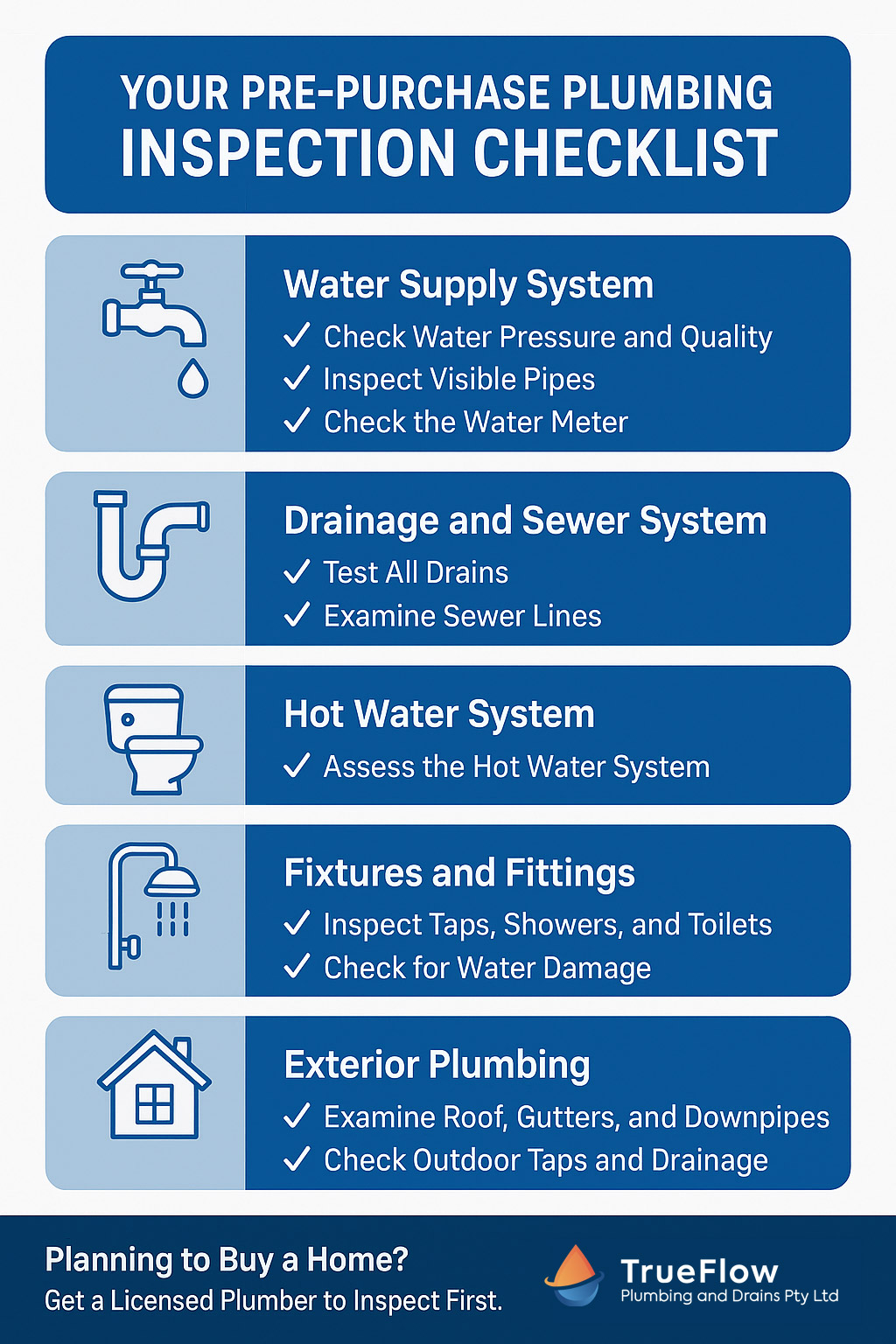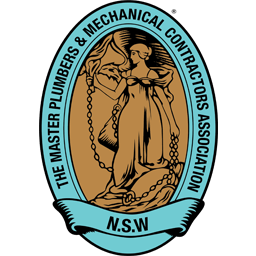Before signing on the dotted line, conducting thorough plumbing checks can save Australian home buyers thousands in unexpected repairs and prevent turning your dream home into a nightmare. While building inspections are standard, they typically don’t include comprehensive plumbing assessments, leaving buyers vulnerable to hidden issues that might only surface after settlement. This guide outlines critical plumbing inspections every prospective homeowner should perform before purchasing property in Australia.
Key Takeaways:
- Up to 30% of new homeowners discover significant plumbing problems after purchase
- Most building inspections don’t adequately cover plumbing systems
- Pre-purchase plumbing inspections can provide negotiating leverage or reasons to walk away
- Professional plumbing inspections typically start from $398-$990 in Australia
Why This Matters: The Hidden Costs of Poor Plumbing
Overlooking plumbing issues during the buying process can lead to significant financial and emotional stress. Purchasing a home represents one of the largest investments most Australians will make in their lifetime, yet many buyers focus on aesthetics while neglecting to thoroughly examine the property’s plumbing infrastructure.
The consequences of inheriting faulty plumbing can be severe and wide-ranging. From expensive emergency repairs to structural damage, health hazards from mould growth, and the daily inconvenience of living with malfunctioning systems – the impact extends far beyond just financial costs. Some homeowners have discovered issues as extreme as gas being supplied through garden hoses or beautifully renovated kitchens and bathrooms connected to collapsing clay sewers that cost $20,000 to rectify post-purchase.
Your Pre-Purchase Plumbing Inspection Checklist
Water Supply System
Check Water Pressure and Quality
- What to Look For: Turn on multiple taps simultaneously to test water pressure. Water should flow consistently and strongly throughout the house.
- Key Red Flags:
- Low pressure, which could indicate faulty water pipes and valves
- Discoloured, brownish, or murky water with visible sediment
- Unpleasant odours from the water
- DIY or Pro? Initial check possible by homebuyer; professional assessment recommended if issues detected.
Inspect Visible Pipes
- What to Look For: Examine accessible pipes under sinks, in basements, and utility areas for signs of damage or poor installation.
- Key Red Flags:
- Rusted, corroded, or cracked pipes
- Excessive use of flexible hose connections (indicates potentially illegal plumbing work)
- Moisture or water stains around pipe connections
- Galvanized steel pipes in older homes (prone to corrosion)
- DIY or Pro? Visual inspection possible; professional assessment recommended for comprehensive evaluation.
Check the Water Meter
- What to Look For: Locate the water meter and check if it’s still ticking when all taps are closed.
- Key Red Flags:
- Movement in the meter when no water is being used (indicates a leak)
- Unusual noises in pipes such as hammering sounds
- DIY or Pro? Initial check possible by homebuyer; professional leak detection required if issues suspected.
Drainage and Sewer System
Test All Drains
- What to Look For: Run water in all sinks, tubs, and showers to ensure they drain quickly and properly.
- Key Red Flags:
- Slow draining water
- Gurgling sounds or bubbling when water goes down
- Multiple drains backing up simultaneously
- DIY or Pro? Basic testing possible by homebuyer; CCTV inspection of underground pipes requires a professional.
Examine Sewer Lines
- What to Look For: Ask for information about the property’s sewer system (septic tank or municipal sewer) and request a copy of current sewerage pipes plan if available.
- Key Red Flags:
- Foul odours inside or outside the house
- Soft, wet spots in the yard
- Previous DIY repairs to sewer systems
- Trees planted near sewer lines (roots can cause pipe damage)
- DIY or Pro? Professional inspection strongly recommended, including CCTV camera inspection of underground pipes.
Hot Water System
Assess the Hot Water System
- What to Look For: Check the age, type (gas or electric), and condition of the water heater. Most have a lifespan of 7-15 years.
- Key Red Flags:
- Units older than 10 years (may need replacement hot water system installed soon)
- Rusting or deterioration on the tank exterior
- Leaking valves or connections
- Inconsistent hot water temperature
- Long waiting time for water to heat up
- DIY or Pro? Basic visual inspection possible; professional assessment recommended for detailed evaluation.
Fixtures and Fittings
Inspect Taps, Showers, and Toilets
- What to Look For: Test all taps, showers, and flush all toilets. Check for leaks, adequate water flow, and proper functioning.
- Key Red Flags:
- Dripping or leaking taps
- Poor water flow from fixtures
- Toilets that run continuously after flushing
- Wobbly toilets or sinks (may indicate improper installation)
- Stiff or difficult to operate taps (may indicate internal damage)
- DIY or Pro? Visual inspection and basic testing possible by homebuyer.
Check for Water Damage
- What to Look For: Examine walls, ceilings, floors for signs of water damage, especially in bathrooms, kitchens, and laundry areas. Look for mould or mildew.
- Key Red Flags:
- Water stains on walls, ceilings, or floors
- Soft spots in flooring around toilets, sinks, or tubs
- Warped or stained flooring
- Musty odours or visible mould growth
- Cracked or broken floor tiles (may indicate water pooling underneath)
- DIY or Pro? Visual inspection possible by homebuyer; professional assessment recommended if issues detected.
Exterior Plumbing
Examine Roof, Gutters, and Downpipes
- What to Look For: Inspect the condition of the roof, gutters, and downpipes for proper water runoff.
- Key Red Flags:
- Rust in guttering or roof
- Recently painted roof (could be hiding issues)
- Blocked or damaged gutters
- Downpipes not properly connected to stormwater system
- DIY or Pro? Basic visual inspection possible; professional roof assessment recommended.
Check Outdoor Taps and Drainage
- What to Look For: Test outdoor taps and observe external drainage during or after rain.
- Key Red Flags:
- Leaking outdoor taps
- Pooling water near the foundation
- Water running toward the house instead of away from it
- DIY or Pro? Visual inspection possible by homebuyer.
Critical Plumbing Red Flags Demanding Attention
Certain plumbing issues are particularly serious and should prompt further investigation or reconsideration of the purchase:
- Active leaks – indicating immediate problems that could cause structural damage
- Water meter movement when no water is being used – suggesting hidden leaks in the system
- Discoloured or sediment-filled water – potentially signaling damaged pipes or serious water quality issues
- Multiple slow drains – possibly indicating a major sewer line problem
- Significant water stains or mould – evidence of ongoing or past water issues that could affect structural integrity and health
- Aged hot water system (10+ years old) – representing a likely near-future expense
- Dampness or water pooling near the foundation – suggesting blocked drainage problems that could lead to structural issues
- Newly renovated bathrooms/kitchens in old homes – potentially hiding serious plumbing issues behind fresh finishes
- DIY plumbing work – illegal in Australia for most tasks and often substandard
- Trees growing close to the house – potential cause of pipe damage from root intrusion
What to Do With Your Findings
When to Perform Checks
The optimal time to conduct plumbing inspections is during the inspection contingency period after your offer has been accepted but before the sale becomes unconditional. This timing allows you to:
- Thoroughly assess the property without the pressure of making an immediate decision
- Gather professional quotes for any necessary repairs
- Negotiate with the seller based on documented issues
- Exercise your right to withdraw from the purchase if major problems are discovered
If You Find Problems
When plumbing issues are identified, you have several options:
- Request repairs before settlement – Ask the seller to fix identified problems before finalising the sale
- Negotiate price reduction – Use documented plumbing issues and repair quotes to negotiate a lower purchase price
- Request credit at settlement – Rather than a price reduction, arrange for credit at settlement to cover repair costs
- Walk away if warranted – For serious issues, particularly those affecting structural integrity or requiring extensive system replacement, consider withdrawing from the purchase
- Factor repair costs into your budget – If proceeding with the purchase, ensure you have accurately budgeted for necessary repairs
Remember that a pre-purchase plumbing inspection provides valuable documentation that can serve as evidence during negotiations. Professional inspection reports carry more weight than DIY assessments when discussing issues with sellers.




